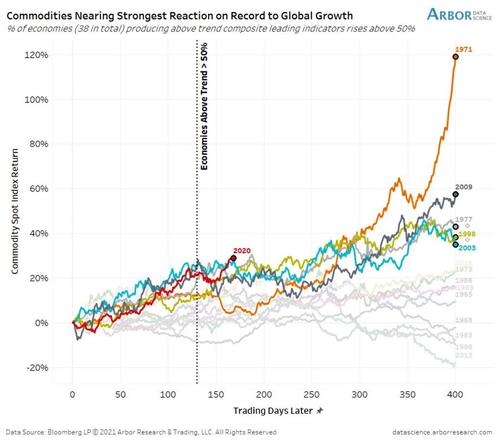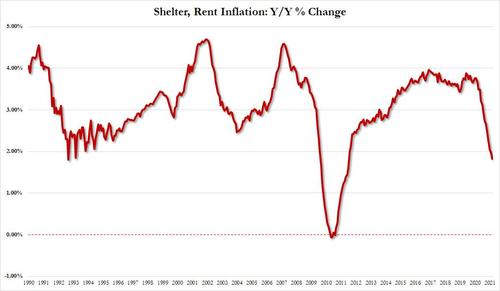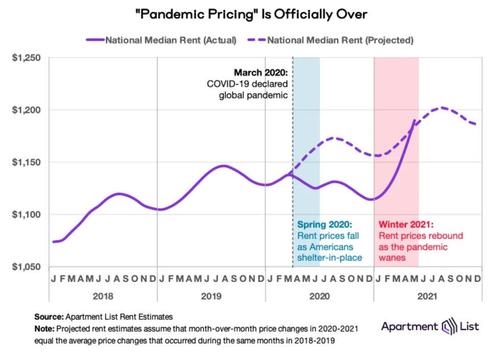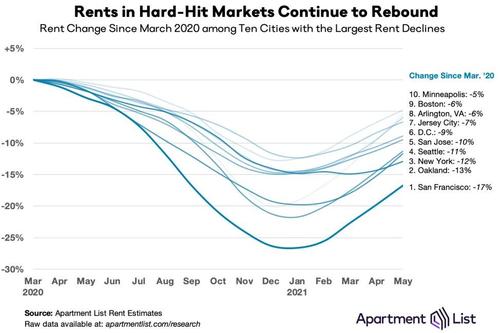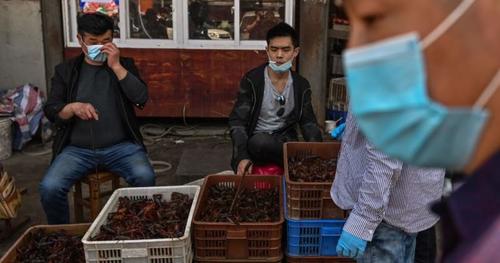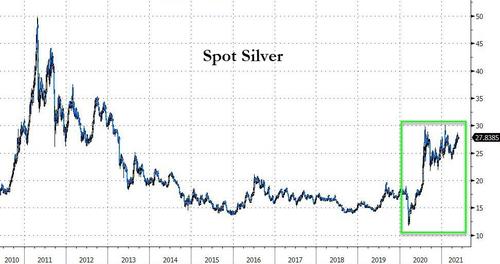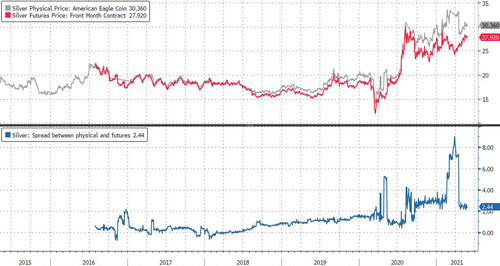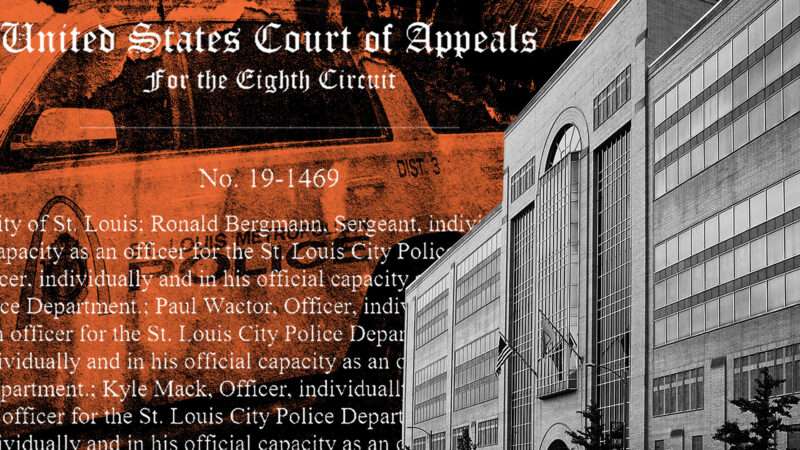
Nicholas Gilbert entered a cell in the custody of the St. Louis Metropolitan Police Department (SLMPD) in December 2015 after officers arrested him for being in a condemned building and failing to appear in court for a traffic ticket. He would not leave alive.
The 10 cops who handcuffed, shackled, and subdued him facedown on the ground of that cell until he stopped breathing did not deploy excessive force and thus cannot be sued over the incident, a federal court ruled last year. The case now heads to the U.S. Supreme Court, which will reportedly announce in the coming days if the nine justices will consider hearing the appeal.
Gilbert attracted the attention of Officer Jason King on the evening of December 8, 2015, when King allegedly noticed Gilbert tying a piece of clothing around his neck and the bars of his cell. Officer Joe Stuckey entered the area to address the issue, and though he says he did not find Gilbert with any clothing around his neck, he proceeded to cuff him. Gilbert struggled and was eventually placed in leg shackles facedown on the floor with the help of Officers Paul Wactor, Michael Cognasso, Kyle Mack, Erich vonNida, Bryan Lemons, Zachary Opel, and Ronald Degregorio, along with Sergeant Ronald Bergmann, who at different points collectively sought to subdue Gilbert.
He would eventually stop breathing, and was later pronounced dead at a nearby hospital.
The U.S. District Court for the Eastern District of Missouri awarded the officers qualified immunity, the legal doctrine that allows government officials to violate your constitutional rights without threat of civil suits if the precise way they violated those rights has not been outlined in a prior court precedent. (In practice, that means that two cops who allegedly stole $225,000 while executing a search warrant got qualified immunity, because there was no previous court ruling that said theft under those circumstances is unconstitutional.)
On appeal, the U.S. Court of Appeals for the 8th Circuit upheld the ruling, writing that the force applied did not qualify as constitutionally excessive.
“Gilbert continued to violently struggle even after being handcuffed and leg-shackled,” wrote Circuit Judge Bobby E. Shepherd. “Specifically, after being handcuffed, he thrashed his head on the concrete bench, causing him to suffer a gash on his forehead, and he continued to violently thrash and kick after being leg-shackled. Because of this ongoing resistance, the Officers moved Gilbert to the prone position so as to minimize the harm he could inflict on himself and others.”
Jody Lombardo, Gilbert’s mother, is now asking that the Supreme Court consider whether or not a reasonable jury could find that the officers violated the Fourth Amendment when they pressed into his back until he died. Overcoming the above hurdles in federal court would not have vindicated her claim; it would merely give her family the right to plead her case in front of a jury. Unless the Supreme Court intervenes, she will not have that privilege.
The high court has relisted the petition around 20 times over the last several weeks as the justices continue to jockey behind closed doors over whether or not they will hear it. The repeated demurral perhaps suggests that one justice is writing a dissent to the denial of certiorari, though the Court recently went so far as to request the record from the 8th Circuit.
SCOTUS legislated qualified immunity into existence by fiat decades ago, but they have refused to reconsider the doctrine wholesale. Yet there have been subtler moves from the Supreme Court in recent months: In November, it reversed a ruling giving qualified immunity to a group of prison guards who locked a naked inmate in a cell covered with human feces and another with a sewage leak, and in February it rejected a decision giving qualified immunity to a corrections officer who pepper-sprayed an inmate without provocation.
Medical evaluators agree that Gilbert would still be alive had he not been subdued facedown that day, but they disagree on just how big a role it played. Post-mortem testing by the state found Gilbert “had a large amount of methamphetamine in his system and significant heart disease,” and that he died of “arteriosclerotic heart disease exacerbated by methamphetamine and forcible restraint.”
A conflicting expert report came to the opposite conclusion, finding that he died of “forcible restraint inducing asphyxia.” Seth Stoughton, an associate professor of law at the University of South Carolina and a primary signatory of an amicus brief in the case, emphasizes that the prone position is exceedingly dangerous—something that medical experts once knew little about but have been increasingly attuned to in recent years. “This is a well-documented danger,” reads Lombardo’s petition. To that point, cops in San Antonio received qualified immunity after holding a man facedown in a hogtie position, leading to his death, although the appeals court thankfully overturned that decision.
“Over 25 years ago, the DOJ’s National Institute of Justice conducted an ‘analysis of in-custody deaths, [and] discovered evidence that unexplained in-custody deaths are caused more often than is generally known’ by asphyxia,” the petition continues. “The agency issued a bulletin to ‘alert officers to those factors found frequently in deaths involving positional asphyxia,’ to enable them ‘to respond in a way that will ensure the subject’s safety and minimize risk of death.'”
There are a few strange details that seem unaddressed by the officers’ account of what happened that day. Lemons testified that “when the resisting stopped, we stood up” and that he then “noticed that [Gilbert] wasn’t breathing.” Lombardo’s petition contends this demonstrates that Gilbert was not released from the position until after he had suffocated. That Gilbert put up an insurmountable struggle until the very moment he stopped breathing indeed seems odd.
In her petition, Lombardo likens Gilbert’s experience to George Floyd’s, the man who died in May of 2020 after he was held in the prone position while former Minneapolis Police Officer Derek Chauvin dug his knee into Floyd’s neck. Chauvin was recently convicted of two counts of murder and one count of manslaughter.
Comparing use of force here is a bit thorny, as Fourth Amendment jurisprudence is granular and very factually specific. But there are still relevant parallels. Had Minneapolis chosen not to settle with the Floyd family, it’s likely they would have had to overcome qualified immunity, should they have wanted to proceed with a lawsuit.
“Derek Chauvin would have had a very plausible chance of getting the suit thrown out on qualified immunity grounds—even after being convicted of murder,” Clark Neily, senior vice president for criminal justice at the Cato Institute, told me last month. “There is no preexisting case in the 8th Circuit under which it was ‘clearly established’ that pinning a suspect under one’s knee for nearly 10 minutes until they lose consciousness and their heart stops beating violates the Fourth Amendment.”
There is at least one other key difference: You’ve likely heard of Floyd’s story. You probably haven’t heard of Gilbert’s. Whether or not the state’s story or Stoughton’s analysis would hold up in front of a jury remains to be seen. But Lombardo should have the opportunity to make that argument in front of one.
from Latest – Reason.com https://ift.tt/3fuJy8O
via IFTTT


